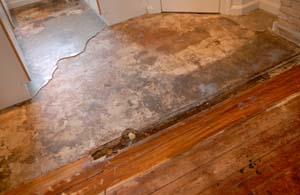Do's and also Don'ts Throughout Water Damage Emergency Situations.
Do's and also Don'ts Throughout Water Damage Emergency Situations.
Blog Article
The article down below about Preventing Fires and Water Damage In Your Home is amazingly stimulating. Don't skip it.

Though water offers life, water intrusion on parts where it's not expected to be can lead to damage. If the water soaks into your structure, it can peel away surfaces as well as wear down the foundation. Mold and mildew and also mold likewise prosper in a wet setting, which can be harmful for your health and wellness. Houses with water damages odor moldy as well as old.
Water can originate from lots of sources such as hurricanes, floods, burst pipelines, leakages, and also sewage system problems. In case you experience water damage, it would certainly be excellent to recognize some safety and security precautions. Here are a couple of guidelines on how to deal with water damages.
Do Prioritize House Insurance Coverage Protection
Water damages from flooding because of heavy winds is seasonal. Nonetheless, you can likewise experience an unexpected flooding when a damaged pipe suddenly breaks right into your home. It would certainly be best to have residence insurance that covers both disasters such as natural calamities, as well as emergency situations like damaged plumbing.
Don't Neglect to Shut Off Energies
This cuts off power to your entire house, stopping electric shocks when water comes in as it is a conductor. Don't fail to remember to transform off the major water line valve.
Do Remain Proactive as well as Heed Climate Notifies
Storm floodings can be really unpredictable. Remain prepared as well as positive if there is a background of flooding in your area. If you live near a river, creek, or lake , pay attention to discharge cautions. Obtain prized possessions from the ground floor and basement, then put them on the highest possible level. Doing so lowers possible residential or commercial property damage.
Do Not Overlook the Roofing System
You can stay clear of rain damages if there are no holes and leakages in your roofing system. This will certainly stop water from moving down your wall surfaces and saturating your ceiling.
Do Take Note Of Tiny Leaks
A burst pipeline does not occur overnight. Normally, there are red flags that show you have damaged pipes in your house. For instance, you might notice gurgling paint, peeling wallpaper, water touches, water stains, or leaking sounds behind the walls. Ultimately, this pipeline will rupture. Ideally, you ought to not await things to intensify. Have your plumbing repaired before it causes huge damages.
Do Not Panic in Case of a Ruptured Pipe
Keeping your clearheadedness is essential in a time of crisis. Because it will suppress you from acting quickly, panicking will only intensify the trouble. Timing is essential when it comes to water damages. The longer you wait, the more damage you can expect. Thus, if a pipeline bursts in your house, instantly shut off your main water valve to cut off the source. Unplug all electric outlets in the location or transform off the circuit breaker for that part of the home. Lastly, call a reliable water damage reconstruction professional for support.
Water provides life, water invasion on parts where it's not supposed to be can result in damages. Houses with water damage smell old and moldy.
Water damages from flooding fees to heavy winds is seasonal. You may notice gurgling paint, peeling off wallpaper, water touches, water stains, or dripping sounds behind the walls. When it comes to water damages, timing is vital.
Some Do's & Don't When Dealing with a Water Damage
DO:
Make sure the water source has been eliminated. Contact a plumber if needed. Turn off circuit breakers supplying electricity to wet areas and unplug any electronics that are on wet carpet or surfaces Remove small furniture items Remove as much excess water as possible by mopping or blotting; Use WHITE towels to blot wet carpeting Wipe water from wooden furniture after removing anything on it Remove and prop up wet upholstery cushions for even drying (check for any bleeding) Pin up curtains or furniture skirts if needed Place aluminum foil, saucers or wood blocks between furniture legs and wet carpet Turn on air conditioning for maximum drying in winter and open windows in the summer Open any drawers and cabinets affected for complete drying but do not force them open Remove any valuable art objects or paintings to a safe, dry place Open any suitcases or luggage that may have been affected to dry, preferably in sunlight Hang any fur or leather goods to dry at room temperature Punch small holes in sagging ceilings to relieve trapped water (don't forget to place pans beneath!); however, if the ceiling is sagging extremely low, stay out of the room and we'll take care of it DO NOT:
Leave wet fabrics in place; dry them as soon as possible Leave books, magazines or any other colored items on wet carpets or floor Use your household vacuum to remove water Use TV's or other electronics/appliances while standing on wet carpets or floors; especially not on wet concrete floors Turn on ceiling fixtures if the ceiling is wet Turn your heat up, unless instructed otherwise

I stumbled upon that blog post about Reducing Your Risk Of Water And Fire Damage At Home while doing a lookup on the internet. Those who appreciated our article kindly remember to share it. I am grateful for your time. Please visit our website back soon.
Report this page